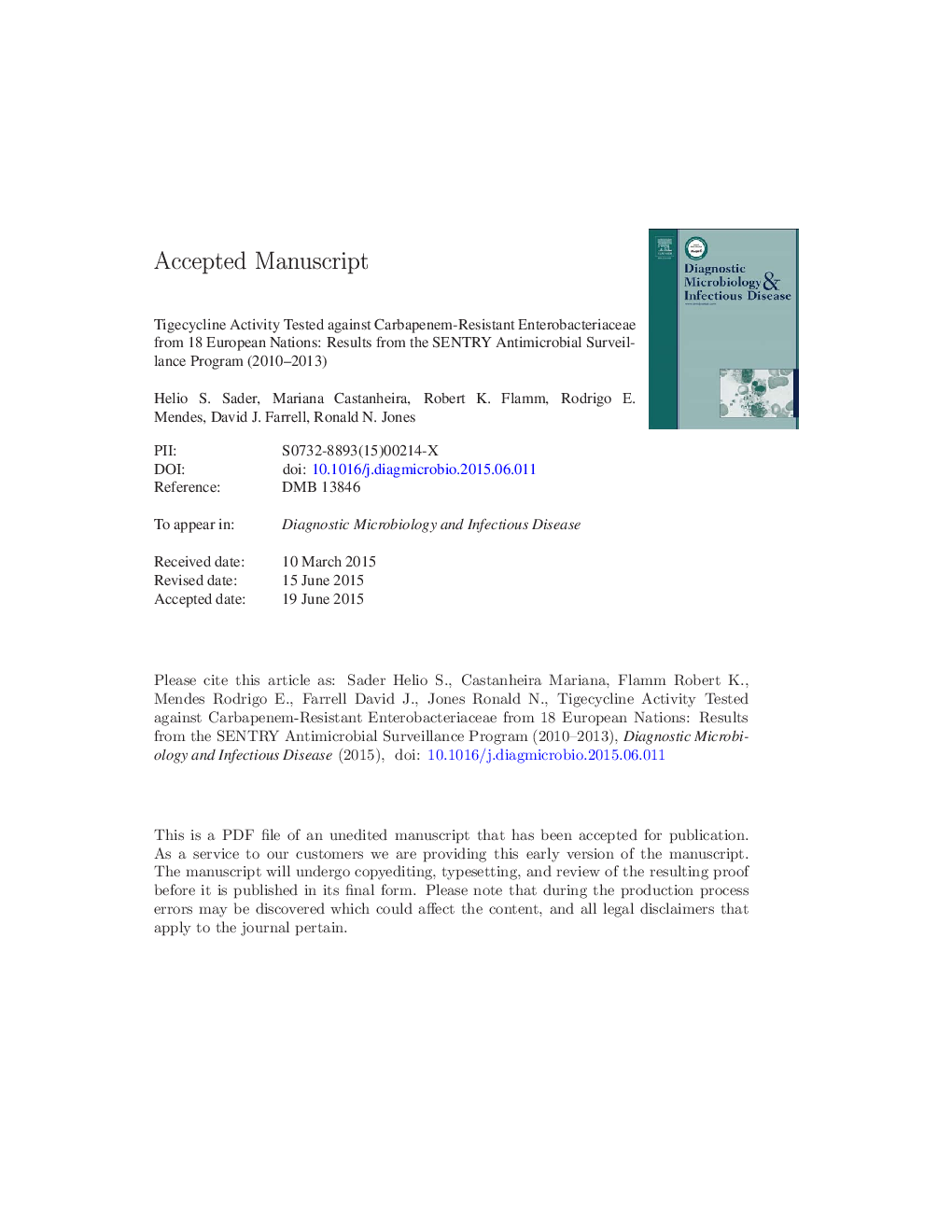| Article ID | Journal | Published Year | Pages | File Type |
|---|---|---|---|---|
| 6115467 | Diagnostic Microbiology and Infectious Disease | 2015 | 17 Pages |
Abstract
We evaluated the in vitro activity of tigecycline and selected comparator agents tested against carbapenem-resistant Enterobacteriaceae (CRE) isolated from European medical centers. A total of 14,286 clinically significant nonduplicate Enterobacteriaceae isolates were collected from 18 European countries in 2010-2013. Susceptibility testing was performed by CLSI broth microdilution method, and isolates with a meropenem or imipenem MIC at â¥4 μg/mL were categorized as CRE. Selected CRE strains were screened for acquired carbapenemases by multiplex polymerase chain reaction and sequencing. Overall, 2.0% (280/14,286) of Enterobacteriaceae strains were CRE. The highest CRE occurrence was observed in Poland (17.3%; 70/405), followed by Italy (7.5%, 130/1,743), Greece (7.4%; 45/605), and Romania (5.0%; 8/157). The most common CRE species were Klebsiella pneumoniae (242; 86.4%) and Enterobacter cloacae (22; 7.9%), and the most common carbapenemases were KPC-2/3 (85.4%) and VIM-type (12.5%). Only tigecycline (88.6% susceptible) and colistin (73.9%) exhibited good in vitro activity (>70.0%) against CRE strains.
Related Topics
Life Sciences
Immunology and Microbiology
Applied Microbiology and Biotechnology
Authors
Helio S. Sader, Mariana Castanheira, Robert K. Flamm, Rodrigo E. Mendes, David J. Farrell, Ronald N. Jones,
